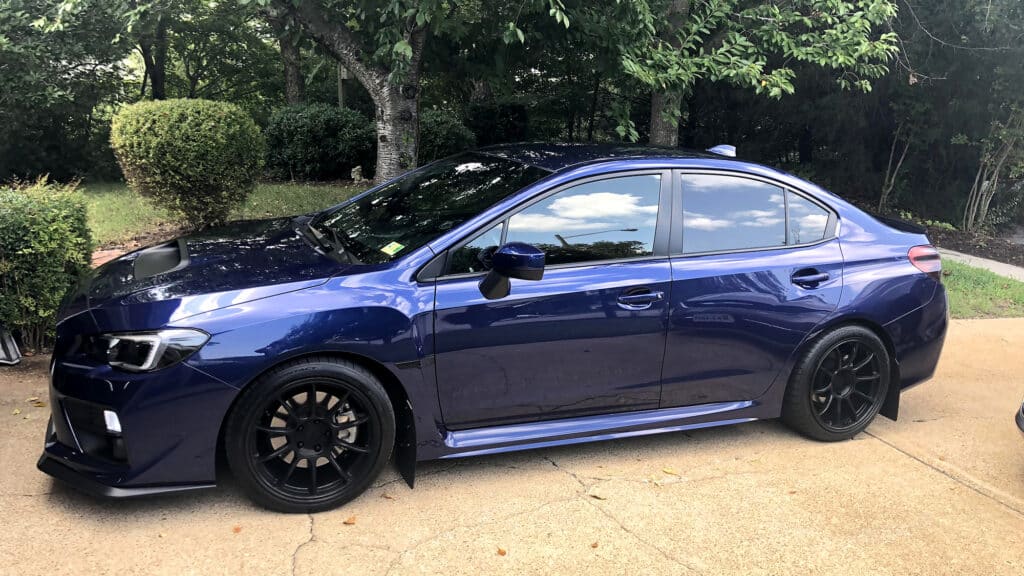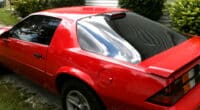Buying and installing window tints in the state of Wisconsin is extremely easy. However, there are rules and regulations around the use of tint film.
Every state, including Wisconsin, imposes restrictions on how dark or reflective your window tint can be.
That said, there are many benefits to getting your windows tinted. Some of these include privacy, improved aesthetics, reduction of heat, UV protection, and increased privacy.
Find out everything you need to know about Wisconsin tint laws in this article.
Is Window Tint Legal in Wisconsin?

Getting your car windows tinted is legal in Wisconsin. However, there are certain requirements for the level of tint darkness and reflectivity mentioned in the state’s tint laws. These laws were enacted in 1996.
Though tinted windows are allowed, the laws differ for different types of vehicles. For instance, sedans and SUVs have different requirements.
Before you install tint film on your car windows, make sure to properly read through the guidelines and stay within the tint limitations.
Below you will find the permitted tint darkness and reflectivity in Wisconsin.
Permitted Window Tint Darkness

VLT or visible light transmission indicates how dark or transparent the tint film is. The higher the VLT%, the more see-through the tint will be. For instance, 55% VLT lets in 55% of the visible light.
On the other hand, if the percentage of VLT is less, the tint will be darker. For instance, a tinted window with 25% VLT will let in only 25% of the visible light.
Here is the stipulated percentage of visible light transmission in the state of Wisconsin with regard to the type of vehicle and tint placement.
Sedans
- Windshield: Non-reflective tint must not go below the AS-1 line.
- Driver-side windows: Tint with 50% VLT is allowed.
- Passenger-side windows: Tint must not have less than 35% VLT.
- Rear window: Tint must not have less than 35% VLT.
SUVs and Vans

- Windshield: Non-reflective tint should not cross the AS-1 line.
- Driver-side windows: Up to 50% VLT is permitted.
- Passenger side windows: Up to 35% VLT is allowed.
- Rear window: Up to 35% VLT is allowed.
Acceptable Tint Reflection

Some tint films deflect incoming light. This is due to the presence of reflective elements within the film. When ambient bounces off the tinted surface, it helps in the reduction of glare and heat within the cabin.
While tint darkness determines the amount of light that can get through a tinted surface, tint reflection decides how much light gets reflected.
Though reflective tints have their advantages, too much reflectivity can be problematic to other drivers and it can lead to accidents.
The use of reflective tints is not permitted in the state of Wisconsin.
Other Wisconsin Tint Rules You Need to Know
There are several other tint rules in the states besides reflectivity and tint darkness restrictions.
- Side mirrors: In the case of darker tints on the rear window (below 60% VLT), the vehicle is required to have dual-side mirrors.
- Colored tint: There are no restrictions on tint colors.
- Tint variance: A 3% variation in VLT levels is permitted.
- Window tint certification: Manufacturers that sell tint films in the state do not need tint certification for the same.
- Certified sticker: There is no requirement for a certified sticker to showcase legal tinting.
- Medical exemptions: If a certain medical condition requires a darker tint, the state permits a medical exemption. In order to obtain this exemption, the individual must receive an authorized waiver.
- Fine for violations: Failure to comply with this law can result in fines up to $1,875.
State of Wisconsin Info

Situated in the north-central region of the country, the state of Wisconsin comprises 72 counties.
In terms of area, it is the 25th-largest state. It was the 30th state to join the union in 1848.
It borders Lake Superior, Minnesota, Iowa, Lake Michigan, Michigan, and Illinois. Milwaukee is its largest city. It has a diversified economy, including dairy agriculture.
Population: Madison
Capital: 5,726,398
Registered vehicles: 5,616,271
Total lane miles: 239,318
Number of highways: 5
Tint law references: Wisconsin Statutes | State Legislature

